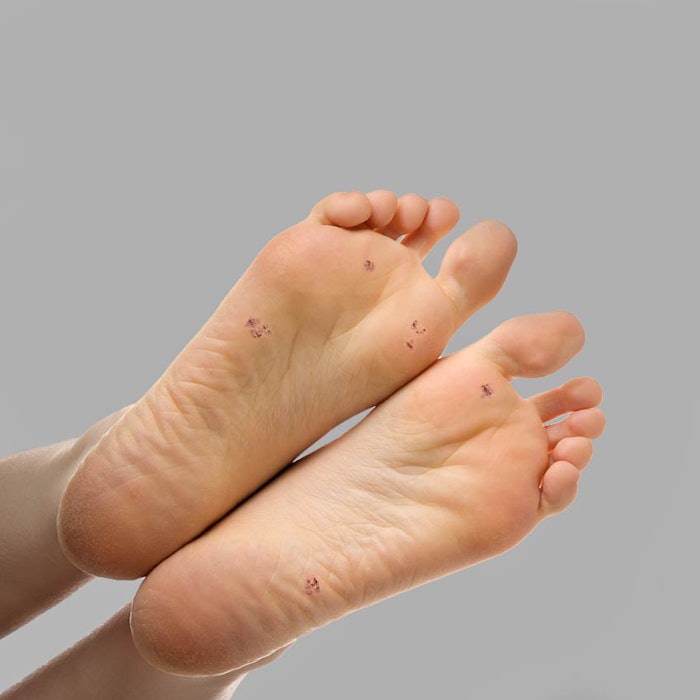
Children, teenagers, people with the habit of nail biting and those with weak immune systems are more susceptible to developing warts over other individuals, according to member dermatologists from the American Academy of Dermatology.
Warts are most common on hands and feet, but can grow anywhere on the skin. Most are brown, grey or skin-colored rough bumps, which could have black dots on them—often referred to as “seeds,” but are actually clogged blood vessels. Face warts are mostly flat, smooth, pink bumps.
“Warts are caused by a virus, and the virus can sometimes spread from one place on your body to another or from person to person,” said Adam J. Friedman, M.D., FAAD, board-certified dermatologist, associate professor of dermatology, residency program director and director of translational research, George Washington School of Medicine and Health Sciences. “However, each person’s immune system responds to the wart virus differently, so not everyone who comes in contact with the virus develops warts.”
Many estheticians will treat clients with warts, so it is important to know how to handle them in the treatment room and how to advise the client to treat them when they go home.
In the Treatment Room
To prevent warts from spreading, warts should not be touched with bare hands. If you touch a wart, it is important to wash hands throroughly afterwards. Warts should be kept dry, since moisture allows them to spread. Do not pick or scratch warts, just leave them alone. Clients with warts should wear proper foot wear in spa showers, saunas and pool areas; this is important to keep the warts from spreading.
Home Treatment
Without treatment, most people will notice their warts go away after two years. However, home remedies helps get rid of warts quicker by irritating or inflaming the wart area for the immune system to fight off the virus.
Those affected by warts should note, treatments that work for some individuals may not work for others and the best way to find out is with trial and error, explained Friedman. Regardless of the treatment, it is impossible to directly kill the wart virus, he added.
Friedman recommends a couple methods to help treat warts at home, including applying a wart treatment with salicylic acid to the wart. Available over-the-counter, this will help peel the wart-ridden skin and irritate the wart, which may trigger the immune system to respond. Before applying the product, soak the wart in warm water and then sand the wart with a disposable emery board. Use a new emery board each time you do this, and keep in mind that it can take several months to see good results.
Warts can I also be covered with duct tape. "Changing the tape every few days may peel away layers of the wart-ridden skin and trigger the immune system to fight off the wart. To do this, soak the wart in warm water and then sand it with an emery board. Afterward, apply duct tape to the area. Remove and reapply the duct tape every five to six days until the wart is gone.”
Seeing a Dematologist
Advise clients to stop home remedies if skin around the wart is raw or bleeding. At this point, the client should see a board-certified dermatologist. In addition, they should see a dermatologist:
- If the wart will not go away;
- If the wart hurts, itches or burns;
- If there are many warts;
- If there are warts on the face or genitals; or
- If there is an unusual skin growth as some skin cancers can look like warts.
“Dermatologists can treat warts through prescription medications or in-office procedures,” said Friedman. “However, it’s important to remember that there is no cure for the wart virus, so new warts can appear in a new spot at any time.”










